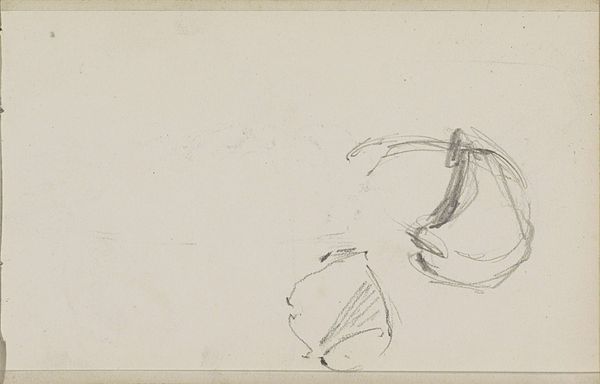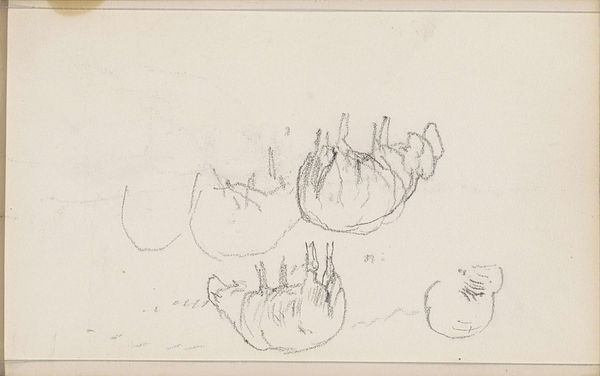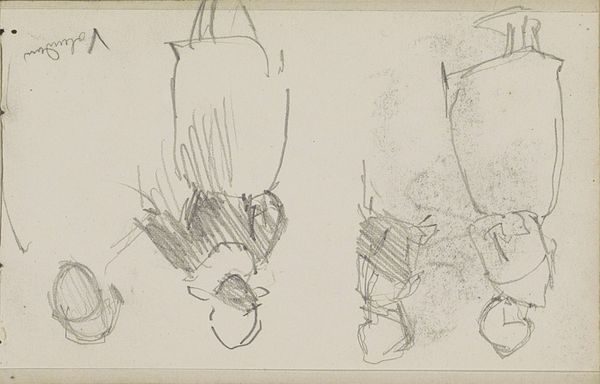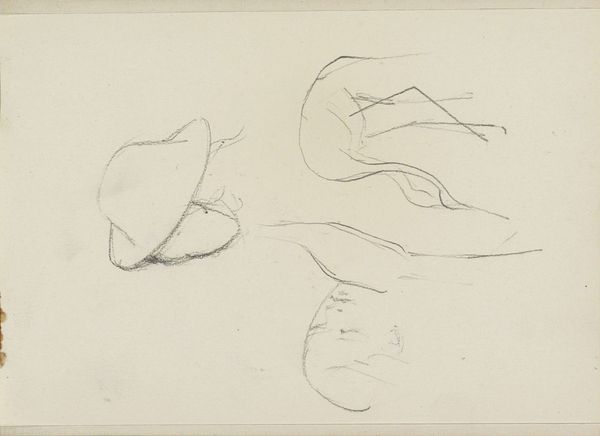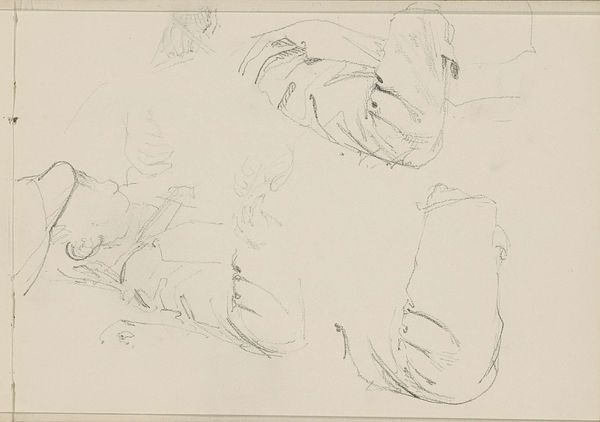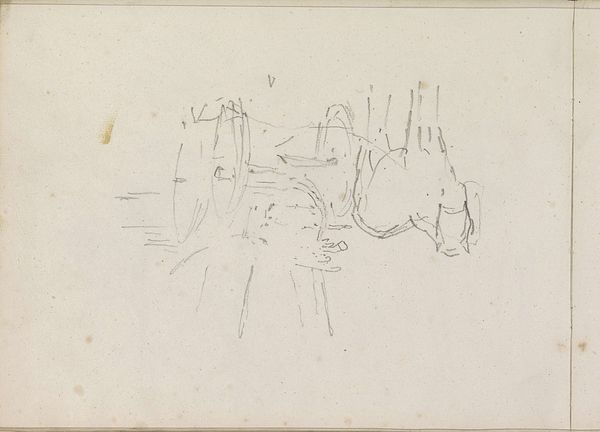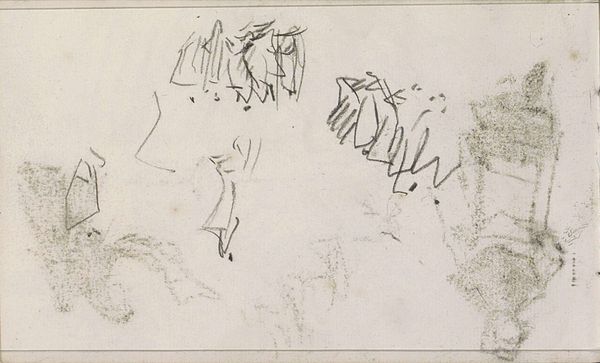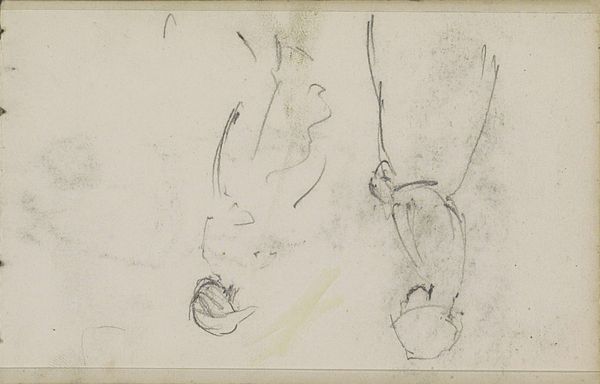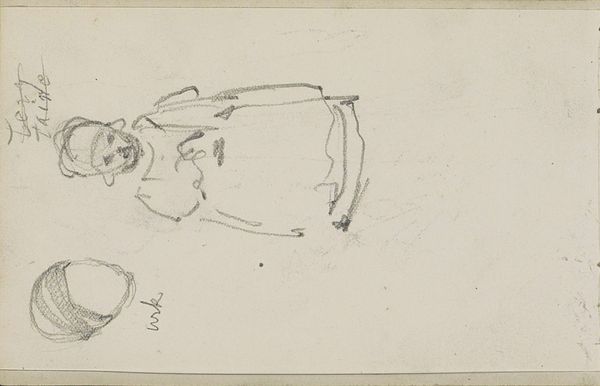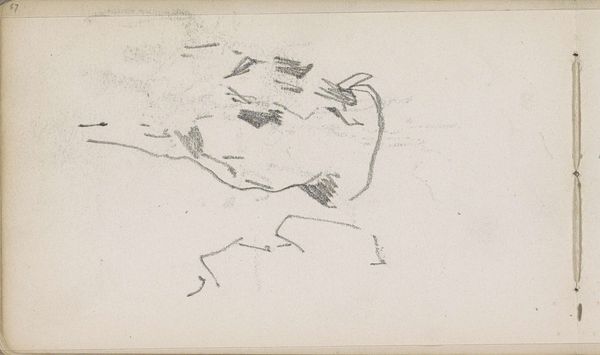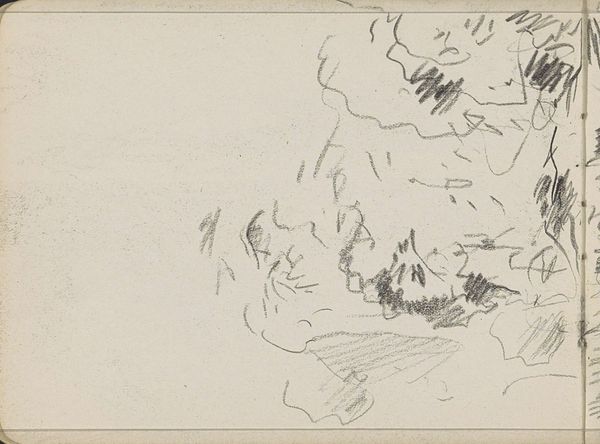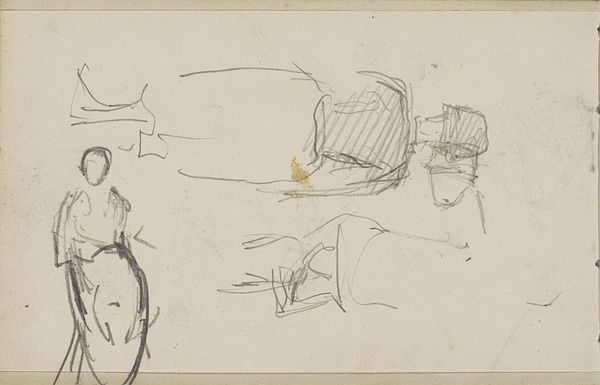
drawing, pencil, graphite
#
drawing
#
amateur sketch
#
light pencil work
#
pencil sketch
#
landscape
#
personal sketchbook
#
idea generation sketch
#
ink drawing experimentation
#
pen-ink sketch
#
pencil
#
graphite
#
sketchbook drawing
#
sketchbook art
#
realism
#
initial sketch
Copyright: Rijks Museum: Open Domain
Editor: So, this is "Drie grazende schapen," or "Three Grazing Sheep," a pencil drawing by Anton Mauve, dating from between 1848 and 1888. It feels incredibly simple and fleeting, like a quick impression. What do you see in this piece beyond just a study of sheep? Curator: It’s more than just a pastoral scene. Sketches like this are interesting because they tap into a deep, almost archetypal connection between humanity and the land, specifically through the symbol of grazing animals. They become icons of peace, of simplicity, echoing across centuries of art and rural life. Note the shorthand lines: do they remind you of anything? Editor: A little like cave paintings, now that you mention it? There's something primal in the quick strokes, especially with the leftmost sheep that’s barely even there. Curator: Exactly. Think of the sheep as more than just sheep, but symbols of provision, sacrifice, innocence even. And Mauve isn’t just recording their likeness; he’s hinting at the deeper emotional weight these creatures carried in the cultural memory of his time – a connection to a simpler, perhaps idealized, past. Editor: I hadn't thought of that. It's interesting how such a simple drawing can be loaded with all these cultural layers. I guess it shows that even the humblest sketch can speak volumes about how we see the world. Curator: And how the world has seen us, for millennia. Each mark is a trace of that long conversation. Now, when you look at those seemingly simple shapes, do you see echoes of that broader human story? Editor: Definitely. I will now! Thanks for opening my eyes to what might seem a simple sketch at first glance.
Comments
No comments
Be the first to comment and join the conversation on the ultimate creative platform.
